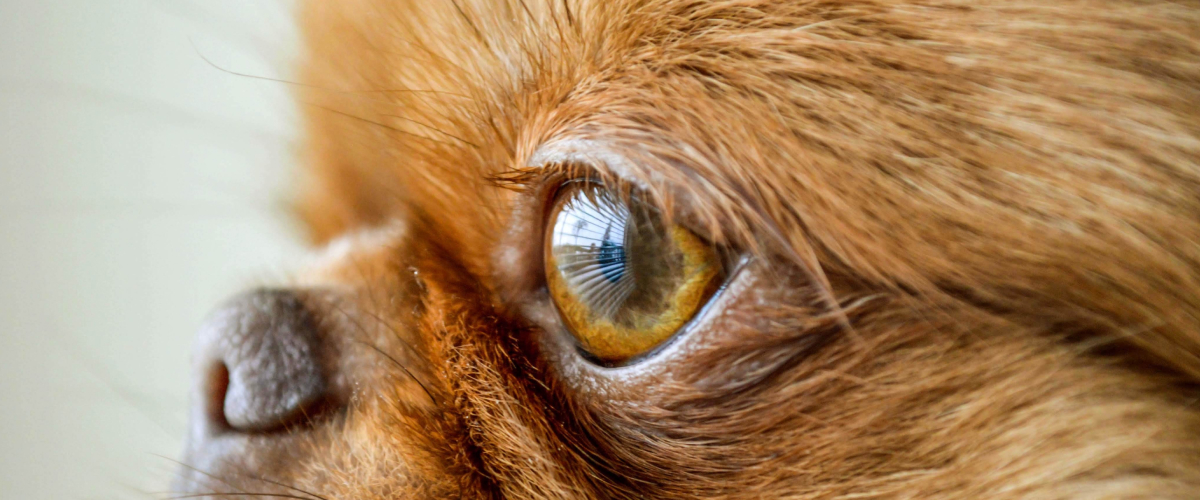Nuclear Sclerosis
Nuclear sclerosis is a normal change in the lenses of older animals’ eyes, usually noticeable after 6 to 8 years of age. It appears as a mild, blue-gray haze in the pupil. It’s caused by the hardening and compression of the lens fibers due to continued growth throughout the animal’s life. This condition slightly affects vision, but it does not cause significant vision loss and is often mistaken for cataracts by pet owners.
Cataracts
Cataracts are characterized by the opacification or clouding of the lens inside the eye, leading to decreased vision and potentially blindness if left untreated. Unlike nuclear sclerosis, cataracts can significantly impair a pet’s vision. Cataracts can be a result of aging, diabetes, inherited genetic disorders, or other eye injuries. Treatment may involve surgical removal of the cataract, which can significantly improve the pet’s vision.
Glaucoma
Glaucoma is an eye condition that results from increased pressure within the eye, which can lead to pain and vision loss. It can be acute or chronic and is more common in certain breeds. Symptoms may include a cloudy or bluish appearance to the eye, visible discomfort, redness, and dilated pupils. Glaucoma requires immediate veterinary attention to relieve pressure and minimize pain and damage to the eye.
Dry Eye (Keratoconjunctivitis Sicca)
Dry eye occurs when there’s insufficient tear production to keep the eye lubricated, leading to eye irritation, discharge, and potentially more serious damage to the cornea. Symptoms include redness, discharge, and a noticeable increase in blinking or pawing at the eye. Treatment typically involves medications to stimulate tear production and artificial tears to keep the eye moist.
Retinal Degeneration
Age-related degeneration of the retina can lead to a gradual loss of vision in senior pets. This includes conditions like Progressive Retinal Atrophy (PRA), which is genetically inherited and leads to the degeneration of retinal cells. Symptoms may not be apparent until the condition is advanced, but can include night blindness and dilated pupils. There’s no cure for PRA, but affected animals can often adapt well to their limited vision as it progresses slowly.
Lenticular Sclerosis
Lenticular sclerosis, often confused with cataracts, involves gradual hardening and discoloration of the lens but does not typically significantly impair vision. It’s a normal aging change that doesn’t require treatment.
Regular Veterinary Check-ups
Regular check-ups with a veterinarian can help detect and manage these conditions. Early detection is crucial for conditions like glaucoma and cataracts, where timely intervention can make a significant difference in outcomes. Maintaining a healthy weight, proper nutrition, and regular exercise can also help manage or prevent health issues in senior pets.
For any concerns about your pet’s eyesight or health, consult with a veterinarian who can provide advice tailored to your pet’s specific needs and conditions.

